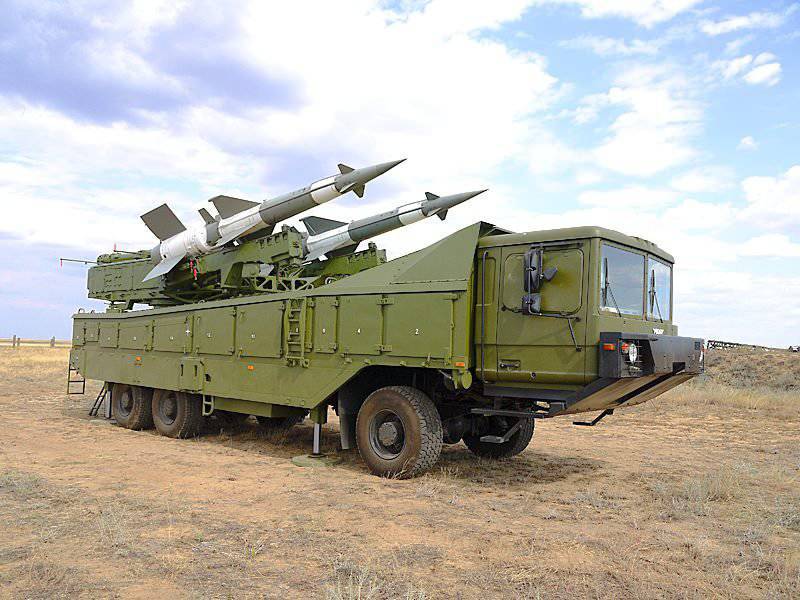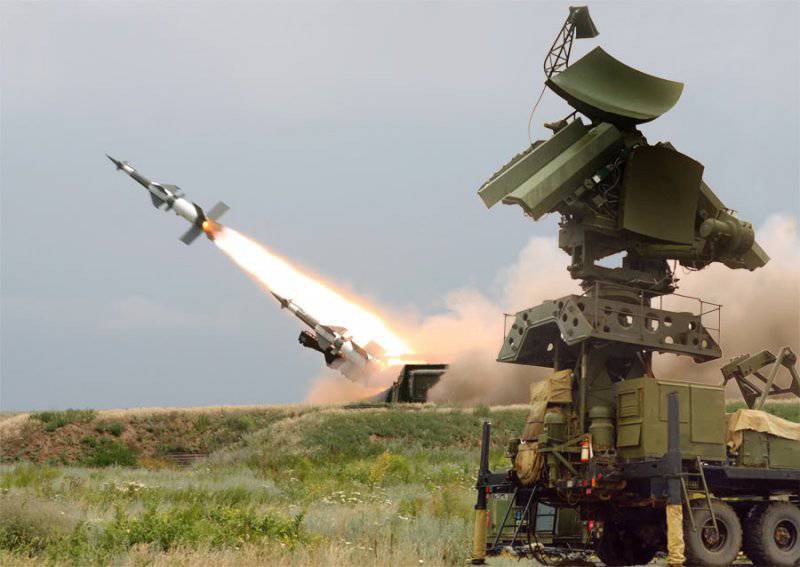Updated Pechora for Venezuela
The latest Russian modification of the good old C-125 complex is the Pechora-2М, created in the middle of the 2000-s. Changes in the modernization affected mainly the electronics of the complex, which received new capabilities in countering the EW means and the enemy’s anti-radar missiles. It was this version of the C-125 air defense system that at one time was interested in the military leadership of Venezuela. Recently it became known that the signing of the contract and subsequent deliveries ultimately allowed Caracas to deploy the first full-fledged battery of these anti-aircraft missile systems. According to the press service of the Venezuelan Ministry of Defense, the new air defense system will cover the area of the international airport of the city of Las Piedras and a large industrial zone located next to it.
In total, according to the plans of the Ministry of Defense of Venezuela, in the coming years, ten similar air defense areas will be created. Such a modernization of the country's air defense system is carried out in accordance with the CADAI program, which provides for the allocation of the new 100 million US dollars to the new air defense systems and related systems. As a result of the purchase and deployment of new air defense systems, the entire territory of Venezuela will be protected from attack. In addition, according to unverified data, in the future, Caracas can offer its neighbors - Guyana and Colombia - to create a unified air defense system. However, there is no official confirmation of this information. Available in the public domain data say that the order of Venezuela implies the supply of 11 batteries of Pechora-2M complexes. The first battery from the order arrived in Venezuela last year, and in February, the new Pechora participated in the parade for the first time.
A few words about the material part. Each battery of the Pechora-2M complexes includes eight self-propelled launchers on the MZKT-8021-020 chassis. Each of them simultaneously carries two guided missiles of various types. Also, the C-125-2М missile guidance station, mounted on the MZKT-80211-020 chassis, relies on each battery. In addition, the battery has cargo, transport-charging and other vehicles based on Ural-4320 trucks, etc. It is easy to calculate how many anti-aircraft missiles can be simultaneously deployed by the Venezuelan military.
Despite its great age, the C-125 in the Pechora-2M version is a significantly modernized air defense system. The fact of major changes in the composition of various equipment allows us to speculate on the sufficient combat effectiveness that Pechora-2M has. Nevertheless, a significant part of the units and assemblies passed to the new modification, except from the original C-125 of the very first version and have the corresponding age. All this together gives certain reasons to doubt the high efficiency of Pechora-2М and, as a result, the ability to withstand the modern technique of the enemy. However, a good experience of using earlier versions of C-125 in a series of conflicts can speak in favor of a decent quality of new air defense missile systems. For example, during the Vietnam War, this complex was a real headache for American pilots. One of the latest known uses relates to the Balkan conflict of the end of the 90-x. Then the outdated C-125 still managed to destroy a certain number of NATO aircraft. Moreover, according to a number of sources, it was the anti-aircraft gunners at the rate of the C-125 anti-aircraft missile system that shot down the famed American F-117A.

Obviously, the original C-125 now poses almost no threat to enemy aircraft. In this regard, it was necessary to make upgrades. It should be noted that many countries needed such an improvement, but not Russia, where C-125 was retired for quite some time. Thus, the modernization of the complex was a purely commercial project. For some personal reasons, it was not NPO Almaz (the creator of C-125) that took over the modernization of the complex, but a new firm founded by immigrants from Almaz. Defense Systems OJSC first of all saw the improvement of the complex in the replacement of electronic equipment. Therefore, both of their developments - “Pechora-2” and “Pechora-2М” - have a transistor instead of lamp equipment. This has significantly improved the performance of electronic systems, as well as reducing the size of the entire complex. In addition, part of the units and, as a result, the characteristics were borrowed from the C-300P anti-aircraft missile system. In addition to the existing means of detection and targeting, an all-weather optical location system with television and thermal imaging channels was introduced into the Pechora-2М equipment. It is the optical target detection system that is one of those innovations that allow Pechora-2M to work in the conditions of electronic countermeasures of the enemy, including when he uses anti-radar missiles. Finally, all components of the updated complex are installed on self-propelled chassis, which allows you to transfer batteries and change the location of individual launchers in the shortest possible time. In this case, the latter may be located at a distance of 10 kilometers from the command vehicle. Communication between the elements of the complex can be carried out using both wired (fiber-optic) communication and wirelessly. In light of the range of 15-18 rocket kilometers (5ВХNUMX rocket), the ability to disperse launchers significantly increases the potential of the battery, especially in the case of small countries. According to various estimates, the characteristics of the updated C-27 came very close to C-125PM and even C-300PMU. Given the cost of upgrading the old C-300 or the production of the new Pechora-125M, it is not difficult to understand the official Caracas interest in modernized anti-aircraft missile systems.
Shortly before Venezuela, the Pechora-2M was adopted by several countries, in particular, Mongolia and Egypt. Also, some states, such as Vietnam, are currently considering the issue of upgrading existing C-125 or purchasing new modifications of this air defense system. At the same time, we should not forget the fact that not only Russian companies are engaged in the creation of improved versions of C-125 air defense systems. So, in the last ten years alone, Belarus has brought to the market two options for upgrading C-125 at once. Nevertheless, Venezuela chose the Russian Pechora-2M complex. The explanation for this concerns several advantages of the Russian air defense system. First, Venezuelan President William Chavez has long stated his intentions to build a full-fledged air defense system of the country, divided into several echelons. Russia, in turn, proposed not only the anti-aircraft missile systems themselves, but also the entire communications and coordination system as a whole. Secondly, the modernization of the C-125 from "Defense Systems" has slightly better performance economics of operation and maintenance than its foreign competitors. Finally, the Pechora-2M is fully and unconditionally compatible with the old C-125 missiles, which allows a country that has sufficient stocks of such ammunition not to throw out money to buy new missiles and to dispose of old ones. Thus, Venezuela will be able to use old SAMs for some time, for example, for educational purposes, and, if necessary, to buy modified ones.
In addition to the “Pechora-2M”, Venezuela will soon receive from Russia a considerable amount of other means of air defense. This will be the C-300ВМ ZRK division, the three divisions of the Buk-M2E, 300 anti-aircraft gun ZU-23 / ZOM4 complexes, as well as the 11 P-18М radar and a number of equipment for creating a single air defense system. In general, the cooperation of countries has its positive consequences: Venezuela receives the means to protect its airspace, and Russian enterprises receive orders for substantial sums.
On the materials of the sites:
http://peacekeeper.ru/
http://pvo.guns.ru/
http://www.rusarmy.com/
http://jdw.janes.com/

Information